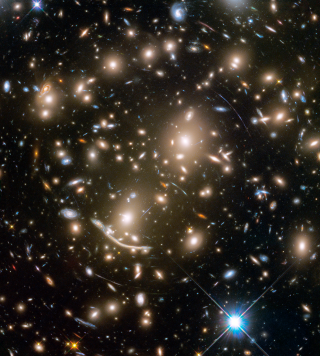Bibcode
Ziegler, B.; Zibetti, S.; Wisotzki, L.; Wild, V.; Vilchez, J. M.; Trager, S. C.; Stanishev, V.; Singh, R.; Spekkens, K.; Sánchez-Blázquez, P.; Roth, M. M.; Quirrenbach, A.; Puschnig, J.; Papaderos, P.; Meidt, S. E.; del Olmo, A.; Mollá, M.; Méndez-Abreu, J.; Márquez, I.; Mármol-Queraltó, E.; de Lorenzo-Cáceres, A.; López-Sánchez, Á. R.; Lehnert, M. D.; Klar, J.; Kennicutt, R. C.; Kehrig, C.; Kalinova, V.; Jungwiert, B.; Holmes, L.; Haines, T.; Gruel, N.; Gomes, J. M.; García-Lorenzo, B.; Gallazzi, A.; Galbany, L.; Flores, H.; Florido, E.; Enke, H.; Díaz, A. I.; Demleitner, M.; Dettmar, R.-J.; Cortijo, C.; Bland-Hawthorn, J.; Barrera-Ballesteros, J. K.; Backsmann, N.; de Amorim, A. L.; Alves, J.; Walcher, J.; van de Ven, G.; Schilling, U.; Ruiz-Lara, T.; Rosales-Ortega, F. F.; Pérez, I.; Pérez, E.; Gil de Paz, A.; Monreal-Ibero, A.; Miskolczi, A.; Mast, D.; Marino, R. A.; Lyubenova, M.; López-Fernandez, R.; Kupko, D.; Johnson, B. D.; Iglesias-Páramo, J.; González Delgado, R. M.; García-Benito, R.; Falcón-Barroso, J.; Cid Fernandes, R.; Catalán-Torrecilla, C.; Castillo-Morales, A.; Bomans, D. J.; Bekeraitė, S.; Barrado, D.; Sánchez, S. F.; Jahnke, K.; Husemann, B.
Referencia bibliográfica
Astronomy and Astrophysics, Volume 549, id.A87, 25 pp.
Fecha de publicación:
1
2013
Revista
Número de citas
203
Número de citas referidas
185
Descripción
We present the first public data release (DR1) of the Calar Alto Legacy
Integral Field Area (CALIFA) survey. It consists of science-grade
optical datacubes for the first 100 of eventually 600 nearby (0.005 <
z < 0.03) galaxies, obtained with the integral-field spectrograph
PMAS/PPak mounted on the 3.5 m telescope at the Calar Alto observatory.
The galaxies in DR1 already cover a wide range of properties in
color-magnitude space, morphological type, stellar mass, and gas
ionization conditions. This offers the potential to tackle a variety of
open questions in galaxy evolution using spatially resolved
spectroscopy. Two different spectral setups are available for each
galaxy, (i) a low-resolution V500 setup covering the nominal wavelength
range 3745-7500 Å with a spectral resolution of 6.0 Å
(FWHM), and (ii) a medium-resolution V1200 setup covering the nominal
wavelength range 3650-4840 Å with a spectral resolution of 2.3
Å (FWHM). We present the characteristics and data structure of the
CALIFA datasets that should be taken into account for scientific
exploitation of the data, in particular the effects of vignetting, bad
pixels and spatially correlated noise. The data quality test for all 100
galaxies showed that we reach a median limiting continuum sensitivity of
1.0 × 10-18 erg s-1 cm-2
Å-1 arcsec-2 at 5635 Å and 2.2 ×
10-18 erg s-1 cm-2 Å-1
arcsec-2 at 4500 Å for the V500 and V1200 setup
respectively, which corresponds to limiting r and g band surface
brightnesses of 23.6 mag arcsec-2 and 23.4 mag
arcsec-2, or an unresolved emission-line flux detection limit
of roughly 1 × 10-17 erg s-1 cm-2
arcsec-2 and 0.6 × 10-17 erg s-1
cm-2 arcsec-2, respectively. The median spatial
resolution is 3farcs7, and the absolute spectrophotometric calibration
is better than 15% (1σ). We also describe the available interfaces
and tools that allow easy access to this first publicCALIFA data at
http://califa.caha.es/DR1.
Based on observations collected at the Centro Astronómico Hispano
Alemán (CAHA) at Calar Alto, operated jointly by the Max-
Planck-Institut für Astronomie (MPIA) and the Instituto de
Astrofísica de Andalucía (CSIC).
Proyectos relacionados

Evolución de Galaxias en Cúmulos
Las estructuras en el Universo, a todas las escalas de masa, se han formado de una forma jerárquica y principalmente producidas por fusiones de galaxias. Sin embargo, esta formación jerárquica de las galaxias está modulada por el entorno en el cual se crean y evolucionan. Mientras que las galaxias de campo presentan una evolución pasiva, los
Jairo
Méndez Abreu

Huellas de la Formación de las Galaxias: Poblaciones estelares, Dinámica y Morfología
Bienvenida a la página web del g rupo de investigación Traces of Galaxy Formation. Somos un grupo de investigación amplio, diverso y muy activo cuyo objetivo principal es entender la formación de galaxias en el Universo de una manera lo más completa posible. Con el estudio detellado de las poblaciones estelares como bandera, estamos constantemente
Anna
Ferré Mateu